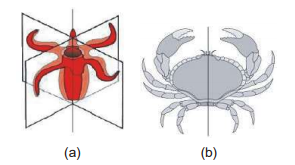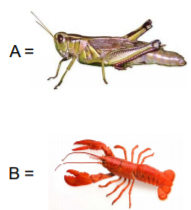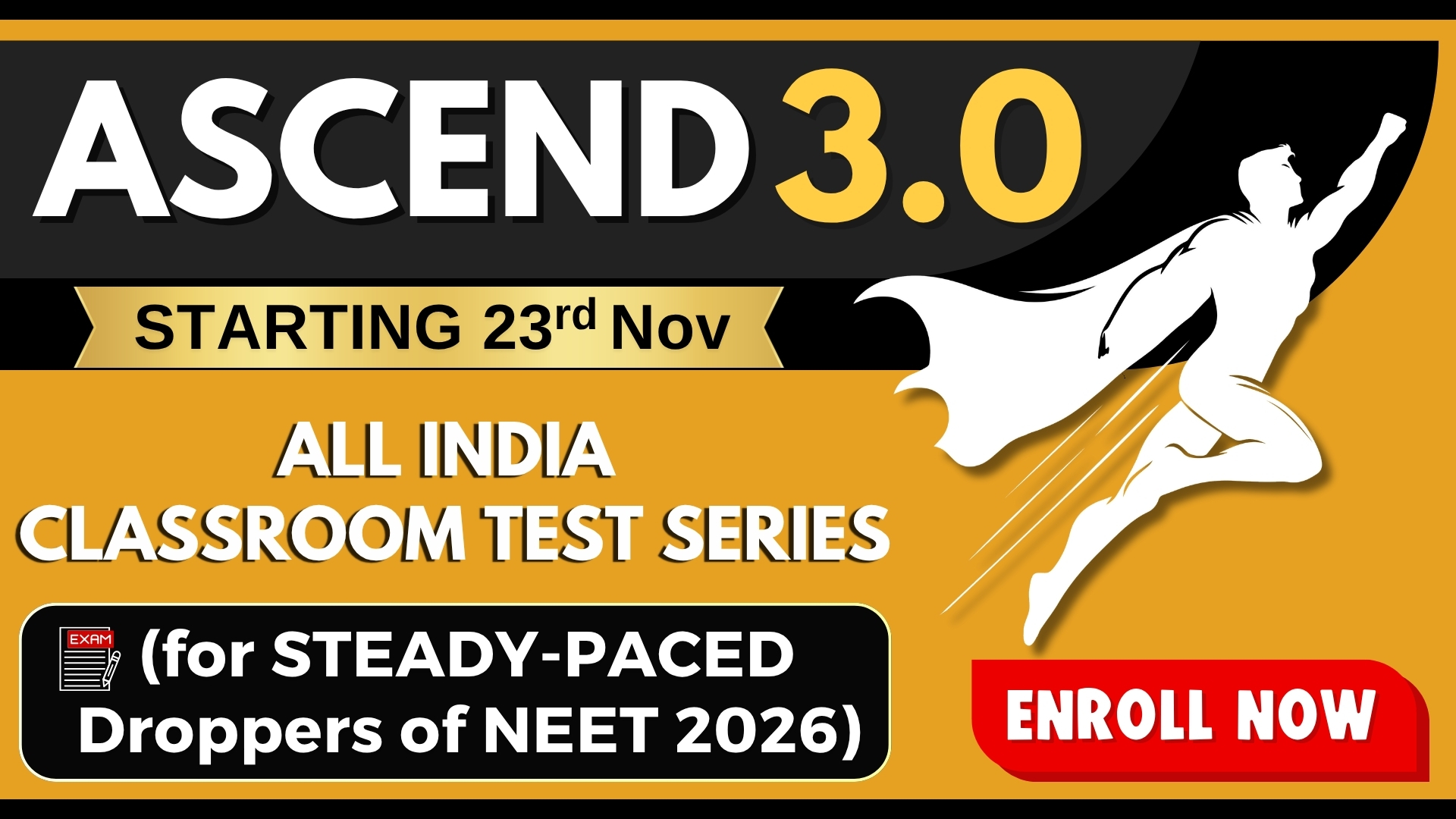Identify the following diagrams and these represent:

1.
(a) radial symmetry, (b) bilateral symmetry
2.
(a) bilateral symmetry, (b) radial symmetry
3.
(a) asymmetrical, (b) radial symmetry
4.
(a) bilateral symmetry, (b) asymmetrical

Bioluminescence is well marked in member of which phylum?
1. Porifera
2. Echinodermata
3. Ctenophora
4. Platyhelminthes
Correct flow water current in sponges is:-
1. Ostia OsculumSpongocoelOutside
2. OsculumSpongocoelOstiaOutside
3. OstiaSpongocoelOsculumOutside
4. OsculumOstiaSpongocoelOutside
Tube within a tube plan is found in
1. Coelenterata
2. Ctenophora
3. Platyhelminthes
4. Aschelminthes
Which of the following is not correct comparison between Locusta (A) and Prawn (B), illustrated in the following diagram?

| Character | Locusta (A) | prawn (B) |
1. | Body Segmentation and abdomen | Head, Thorax and Abdomen | Cephalothorax |
2. | Excretory organs | Malpighian tubules | Green glands |
3. | Respiratory organ | Trachea | Gills |
4. | Eye | Compound | Simple |
1. 1
2. 2
3. 3
4. 4
Which one of the following is not the function of cnidoblasts (sting cell)?
1. Anchorage
2. Defense
3. Caputure of prey
4. Reproduction
In Planaria, waste material of food digestion and Nitrogenous waste material removed from
1. Mouth and mouth
2. Body wall and body wall
3. Mouth and Flame-cell
4. Mouth and Body wall
Which of the following statements are true for the phylum-Chordata?
| (a) | In Urochordata, notochord extends from head to tail and is present throughout their life |
| (b) | In Vertebrata, notochord is present during the embryonic period only |
| (c) | Central nervous system is dorsal and hollow |
| (d) | Chordata is divided into 3 sub-phyla : Hemichordata, Tunicata and Cephalochordata |
1. (c) and (a)
2. (a) and (b)
3. (b) and (c)
4. (d) and (c)
Bilaterally symmetrical and acoelomate animals are exemplified by:
1. Platyhelminthes
2. Aschelminthes
3. Annelida
4. Ctenophora
Match the following diseases with the causative organism and select the correct option:
| Column I | Column II | ||
| (a) | Gregarious, polyphagous pest | (i) | Asterias |
| (b) | Adult with radial symmetry and larva with bilateral symmetry | (ii) | Scorpion |
| (c) | Book lungs | (iii) | Ctenoplana |
| (d) | Bioluminescence | (iv) | Locusta |
| (a) | (b) | (c) | (d) | |
| 1. | (iv) | (i) | (ii) | (iii) |
| 2. | (iii) | (ii) | (i) | (iv) |
| 3. | (ii) | (i) | (iii) | (iv) |
| 4. | (i) | (iii) | (ii) | (iv) |






